Chairgan
A chair that is also a pipe organ.I was told to build a chair for a sculpture/design class in college, and decided that the best way to make that more exciting was for the chair to also be an instrument. Thusly, the Chairgan was born.
Here is a brief overview of its construction:
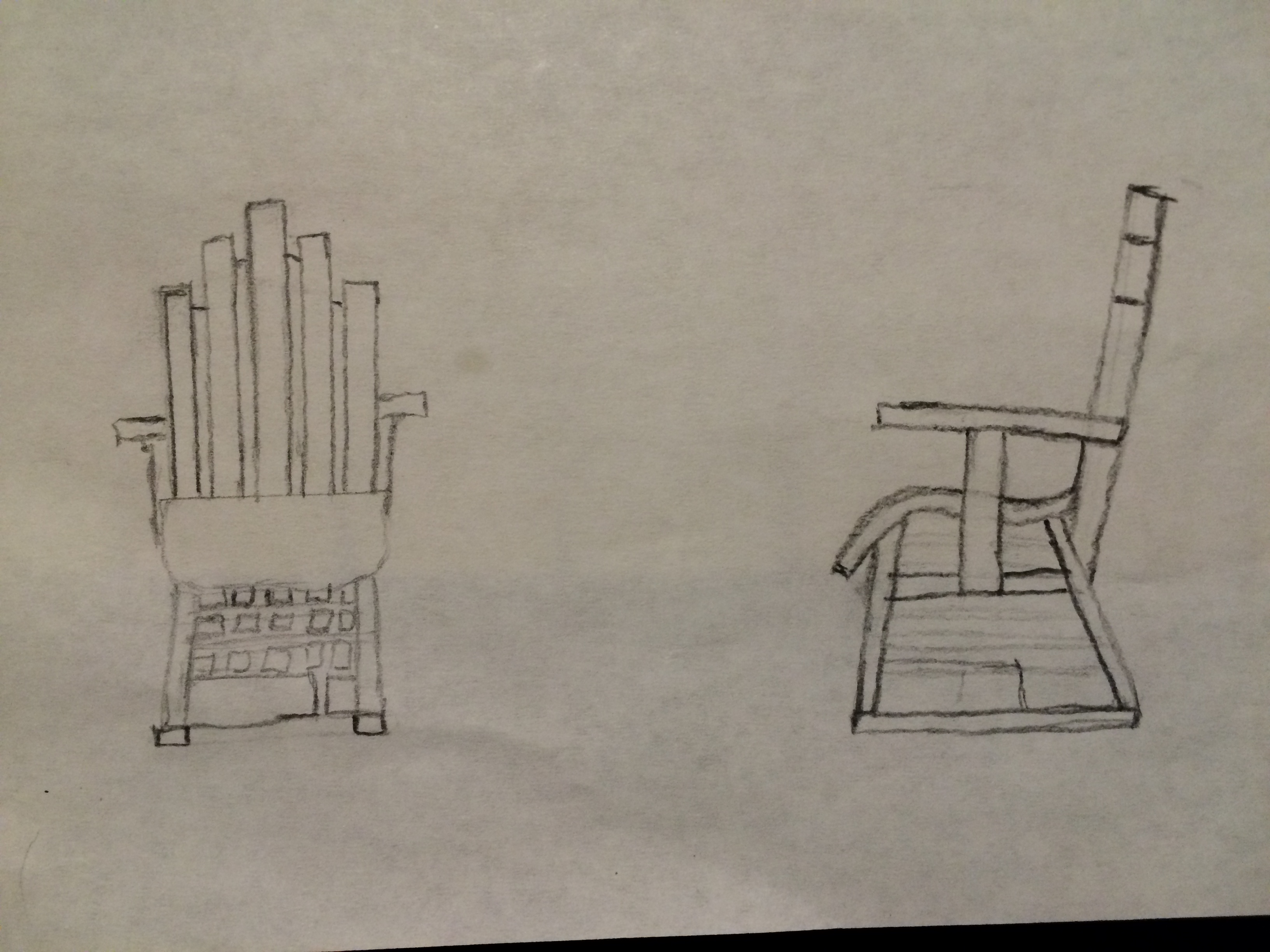
Initial sketches
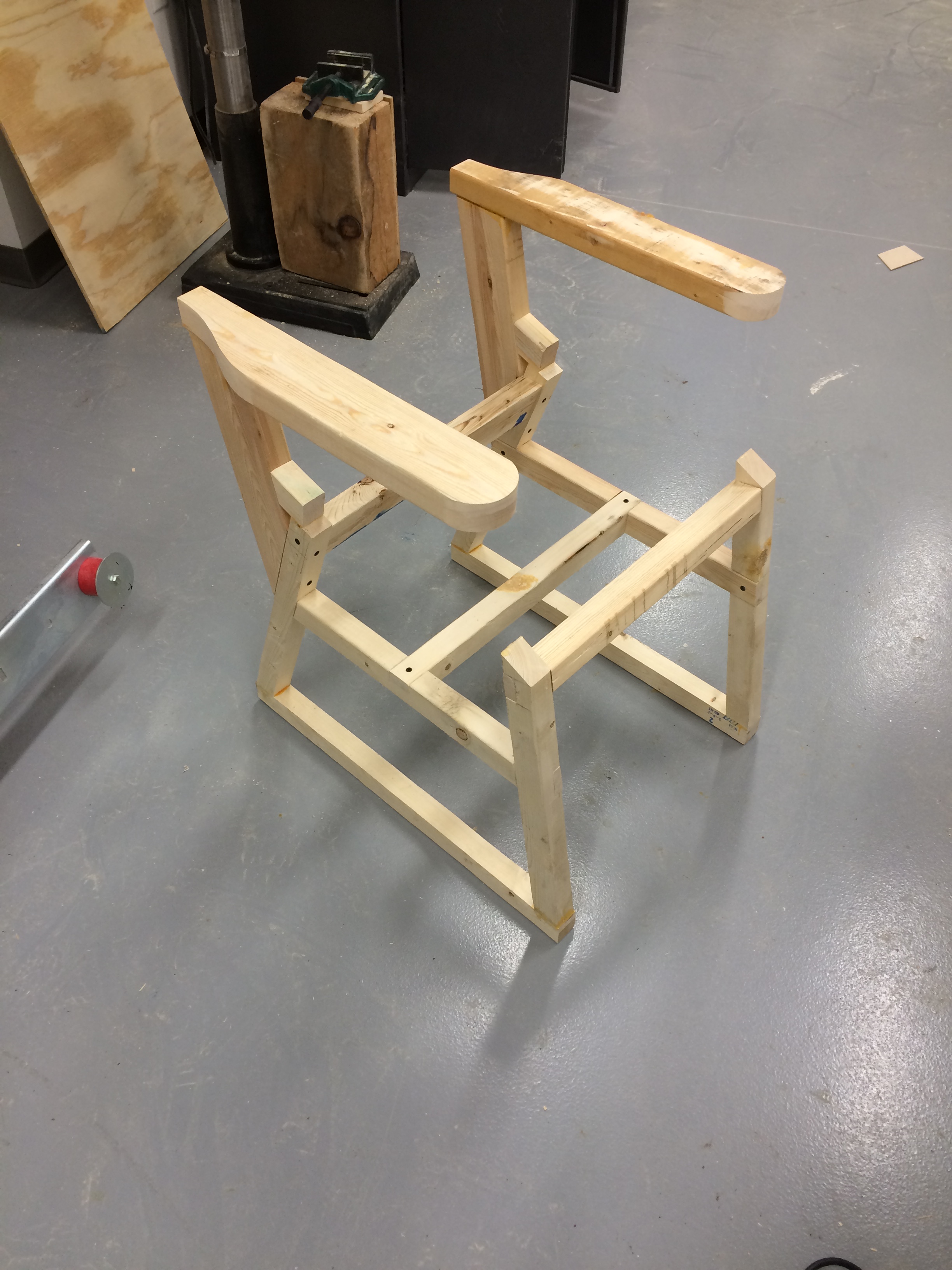
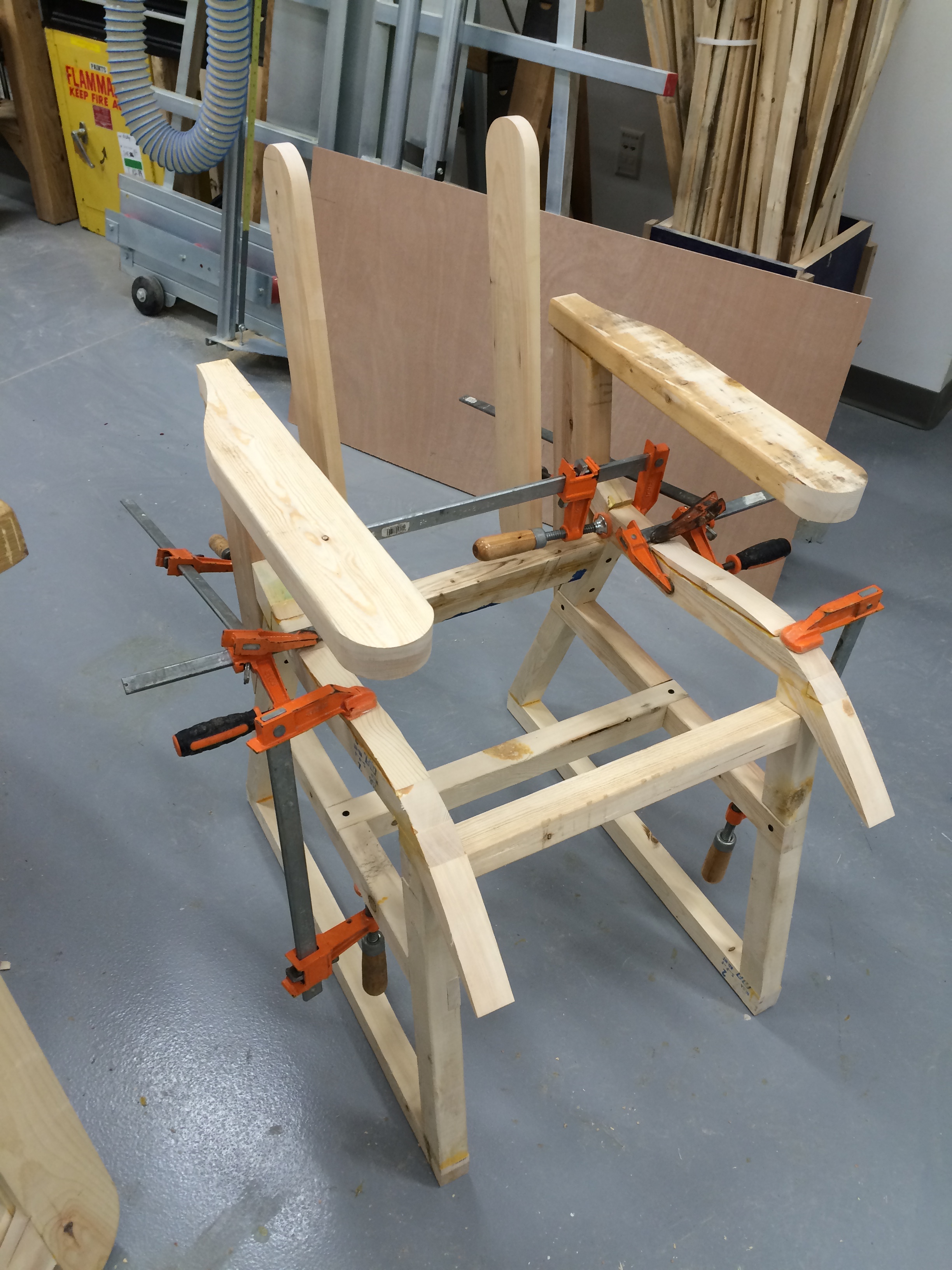
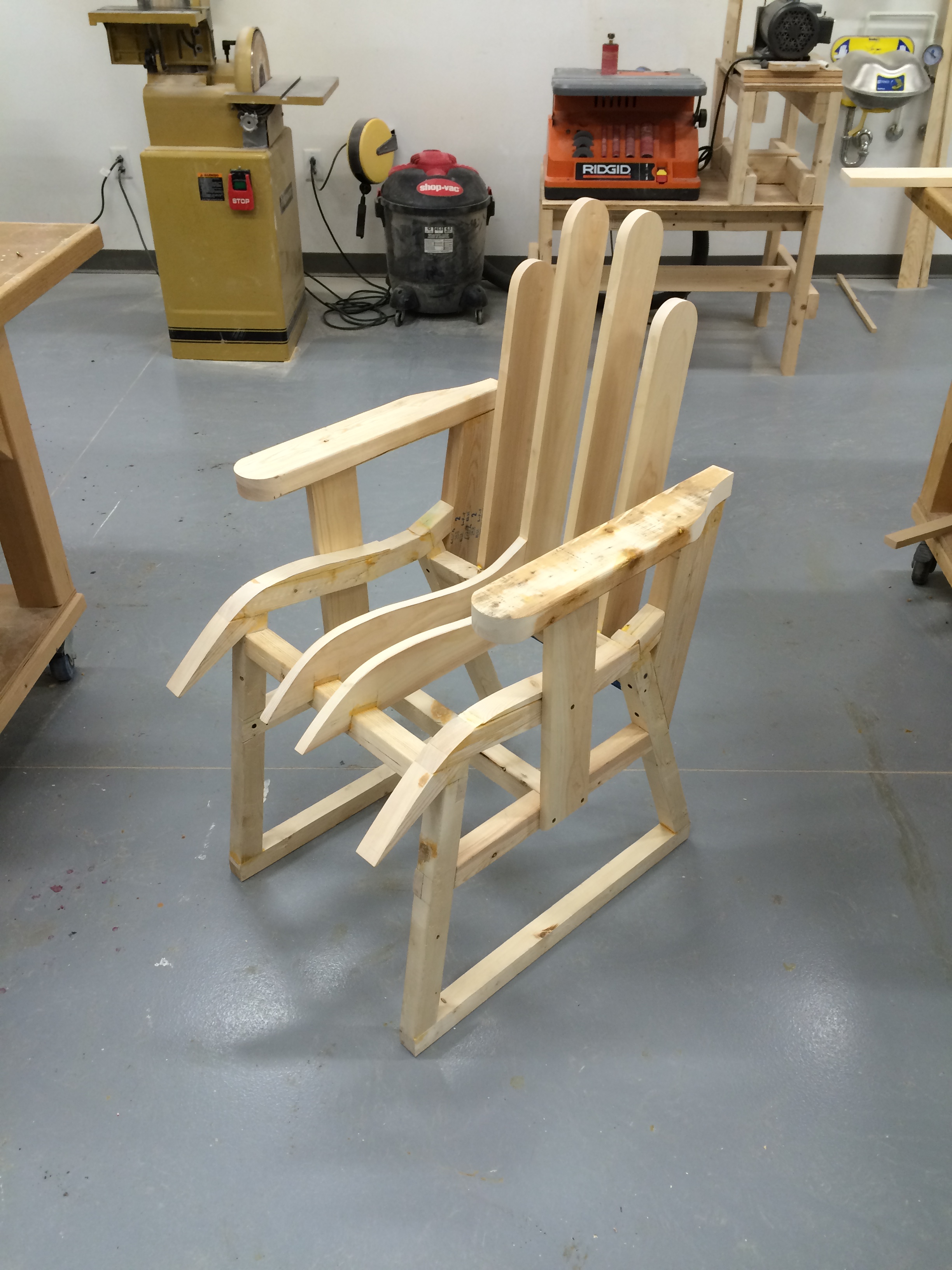
Frame constructed, side seat supports added, seatback and mid supports added.
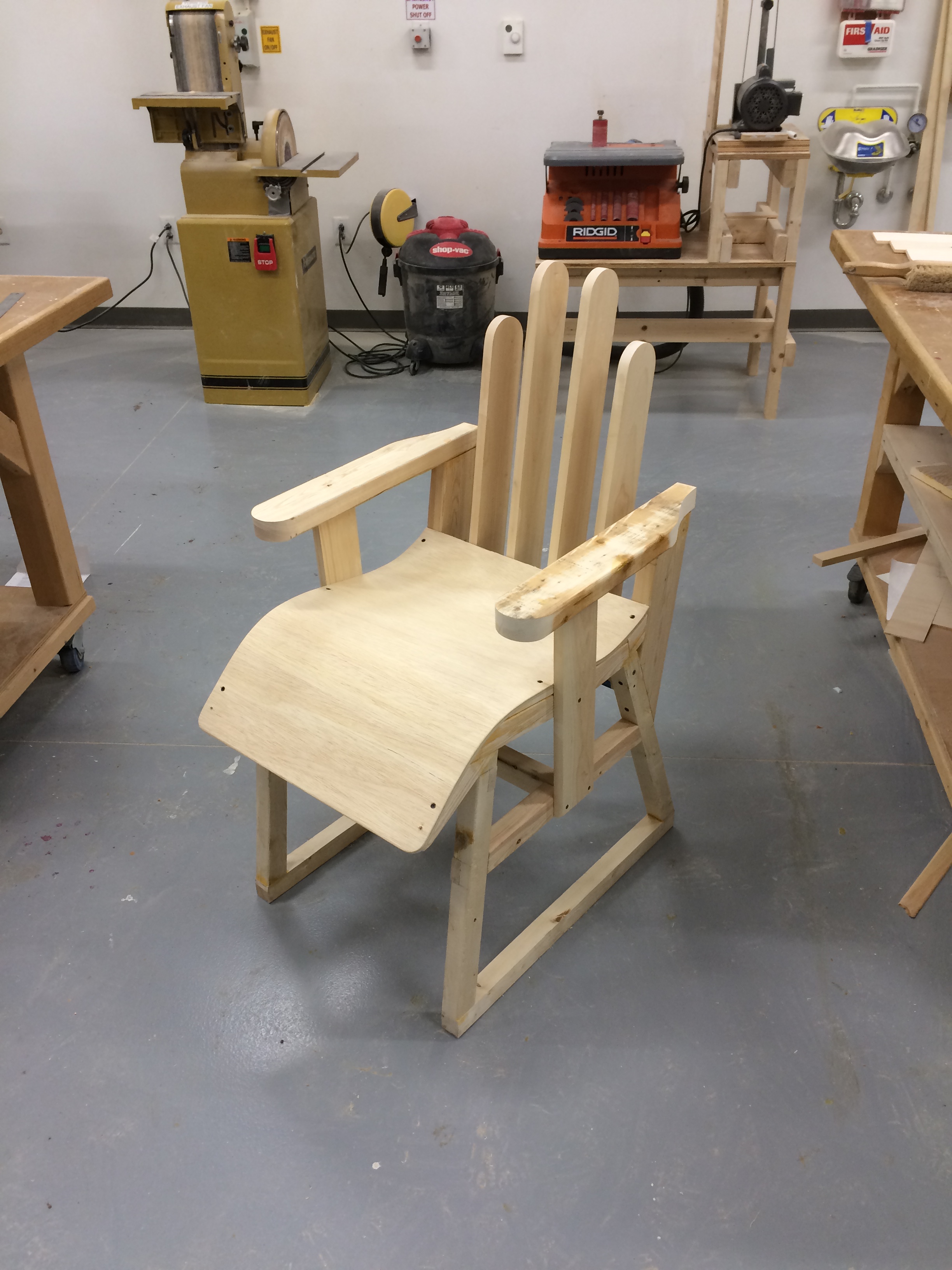
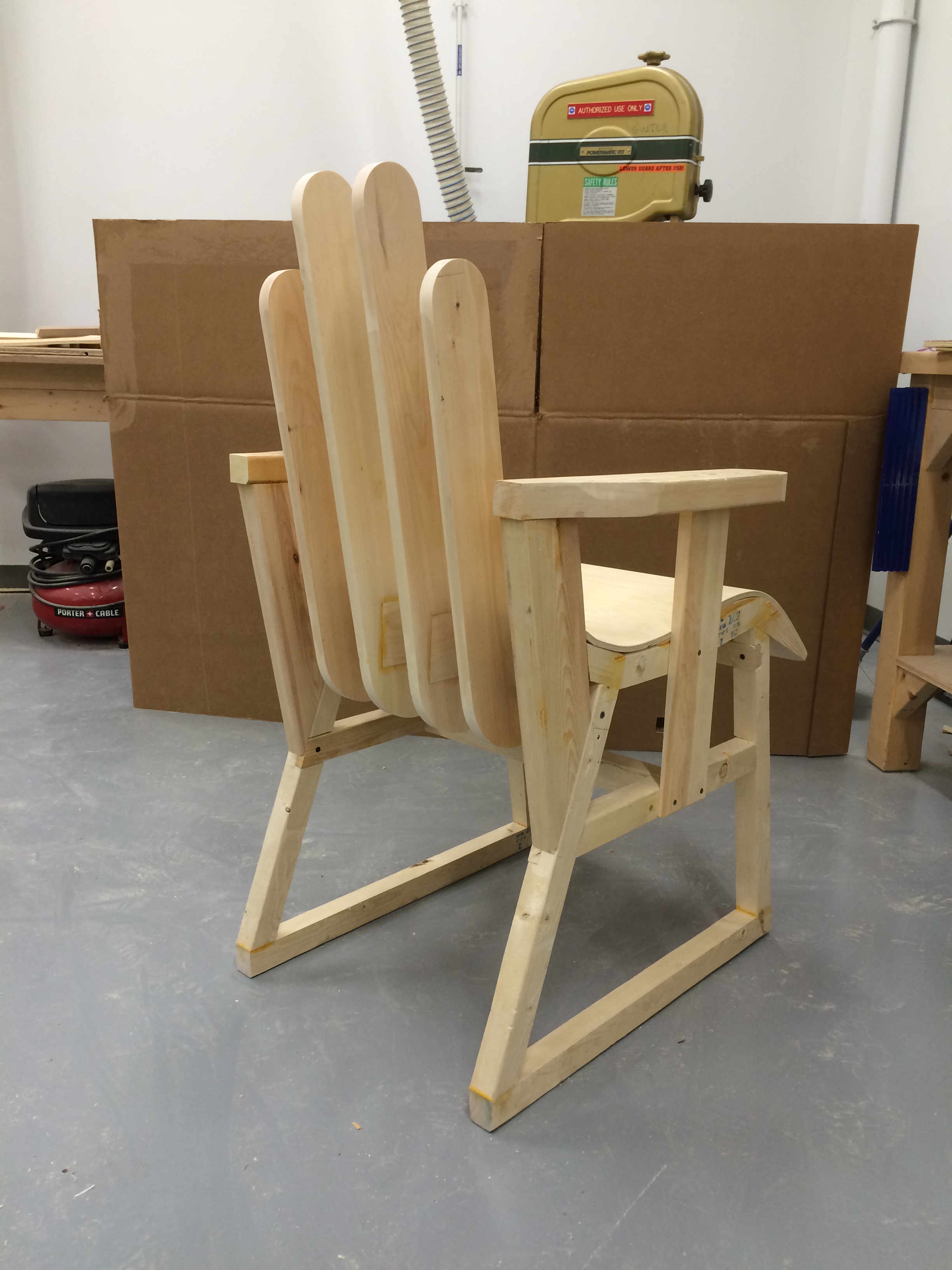
Seat added.
The chairgan now has all its chair parts, leaving just the organ parts remaining.
I began work on the pipes, before my progress was rudely interrupted by COVID-19.
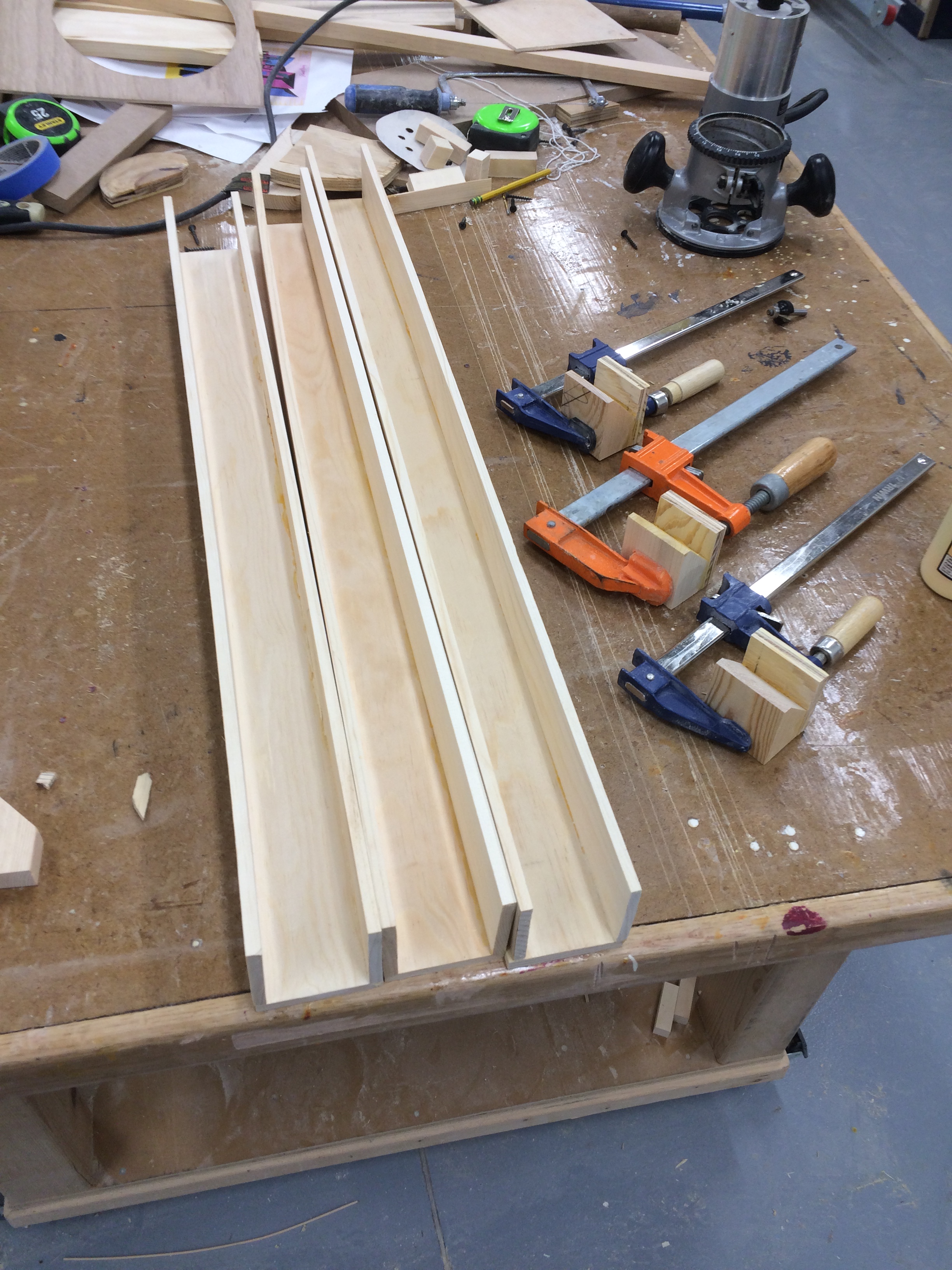
First three pipes begun. The notes are F, F#, and G.
With the chair stuck at school and me stuck at home due to the virus, I began working on the keyboard of the instrument. I began by raiding a nearby dumpeter for some wood to make the keys out of. I found a bed or something that had been broken down, and combined with some stuff that was laying around in the garage, I fabricated a simple 2 octave keyboard.
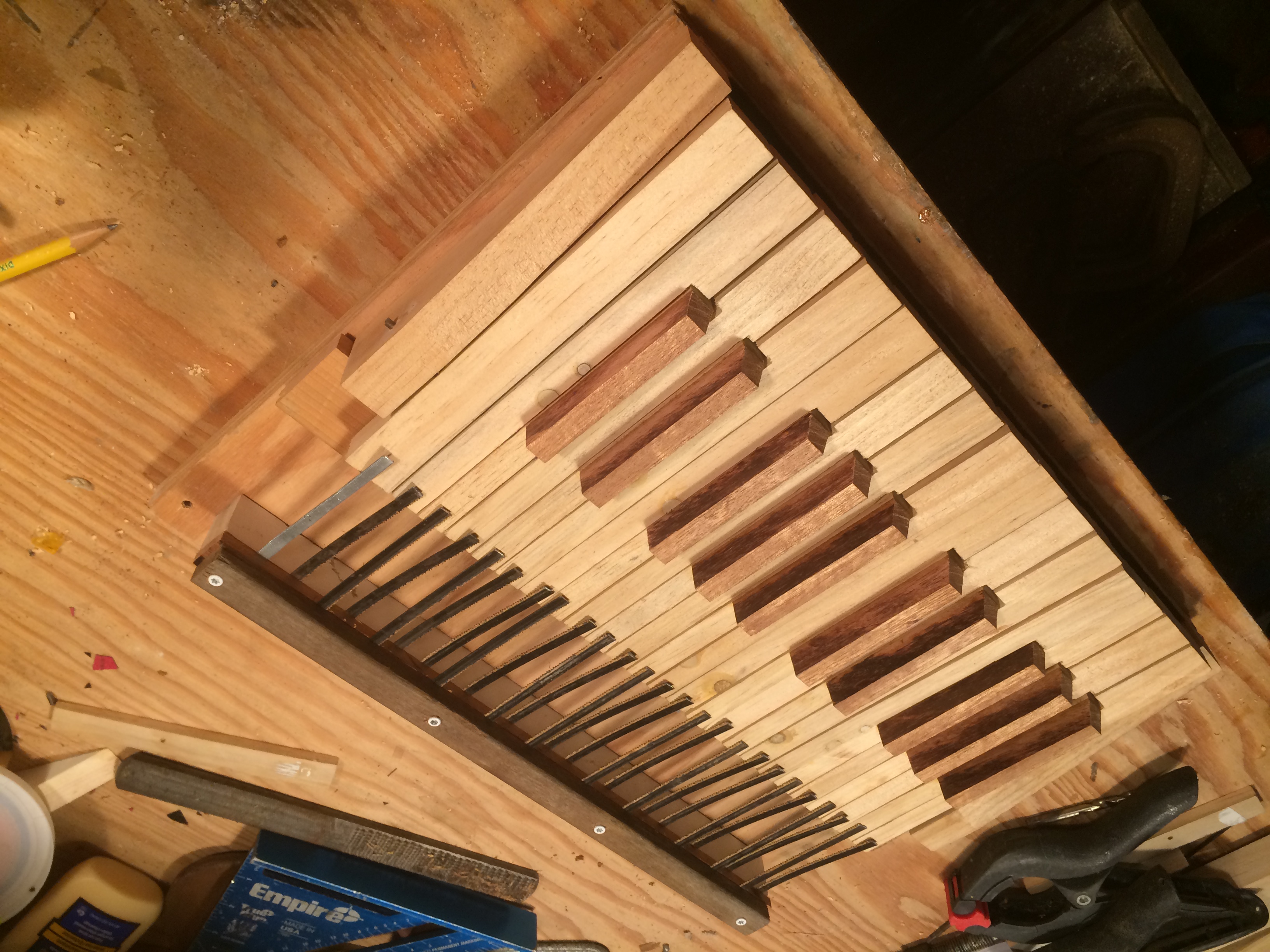
The innards of the keyboard.
I had thoughtfully salvaged an old bandsaw blade from school prior to being sent home, which I used to make the keysprings. They also served as key contacts when I temporarily appropriated the keyboard to become the ChairganSynth. The keys themselves pivot on a through-axle, which isn't the easiest for adjustment, but is feasable for small keyboards like this one.
By the time the restrictions had lifted and I was able to return to college in person, it was a new semester, so the project never got finished. I took the chair home but eventually it just ended up sitting in my mother's basement, awating my attention...
But then! After a few years in limbo, I returned to the project with renewed enthusiasm and began working on the valves.
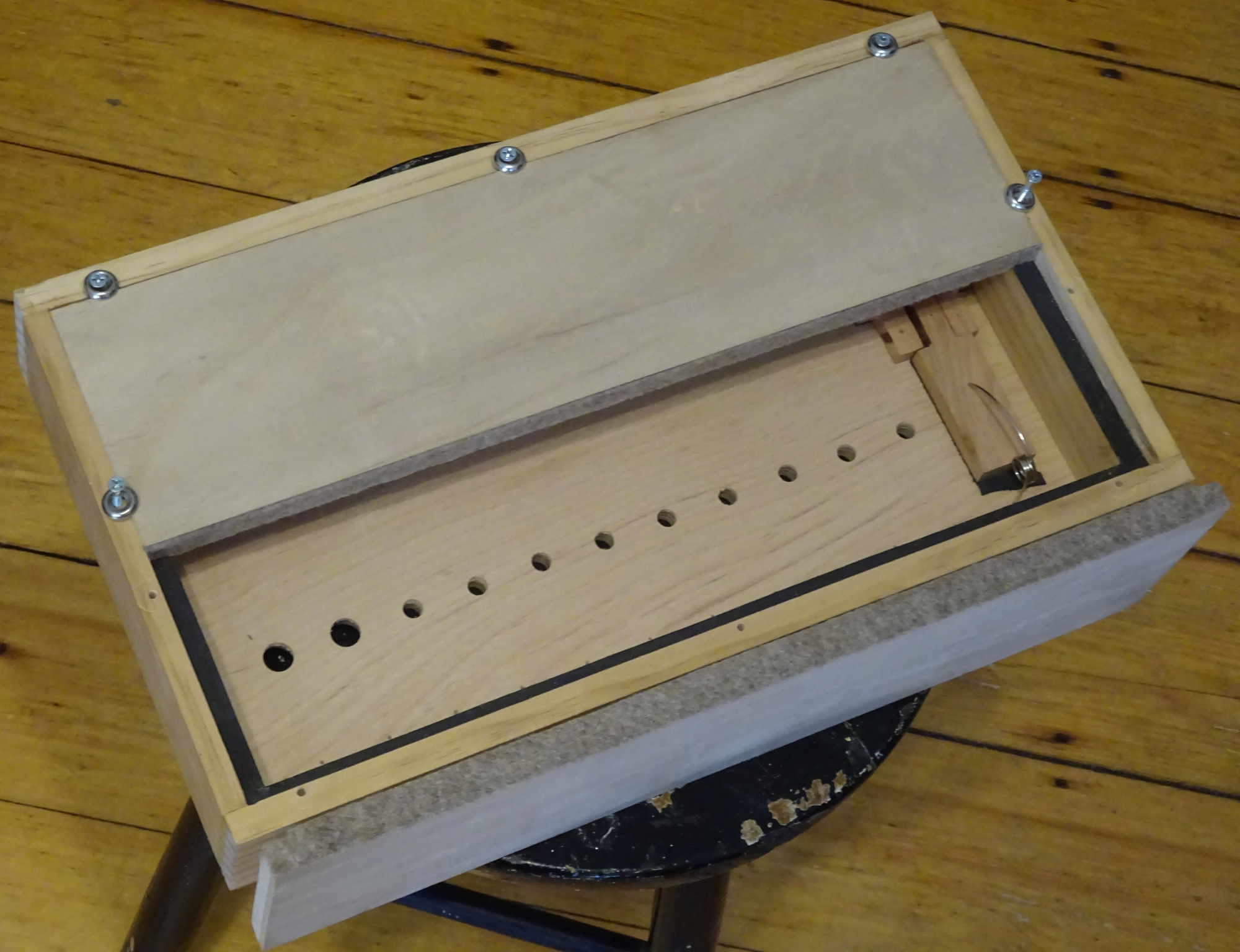
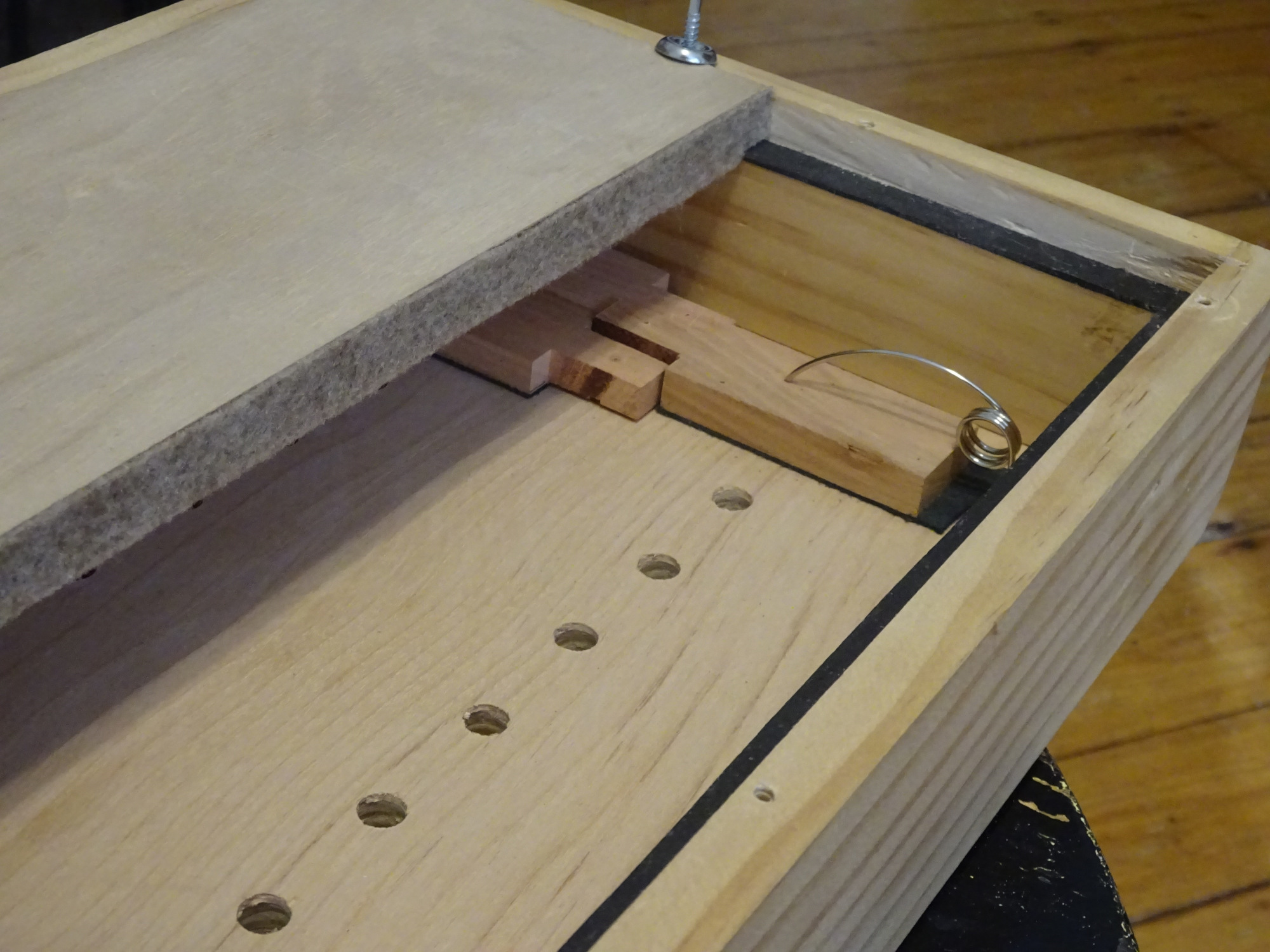
The valve chest in progress.
The valve chest is just a sealed box with 25 holes in the bottom. Hoses fit into those holes and will carry the air to each pipe. Simple valves made from scrap cherry with a leather seal cover the holes and are held down by homemade springs. A felt gasket between the two halves of the top of the box allow pull-wires to reach from the valves out of the box without letting too much air escape. These wires then run up through the bottom of the keyboard and hook onto the backs of the keys... and voila! A key mechanism!
References
- Raphi Giangiulio's website and videos
- Matthias Wandel's organ page